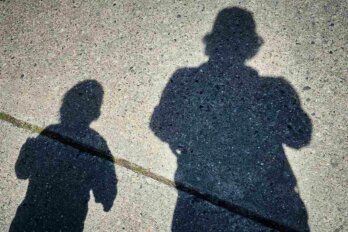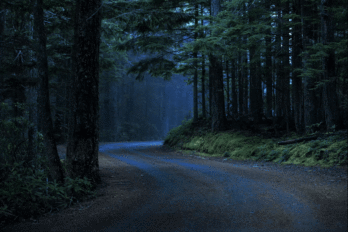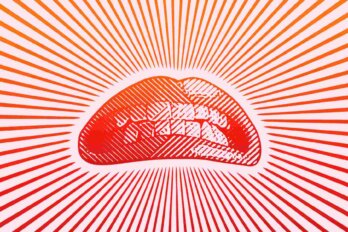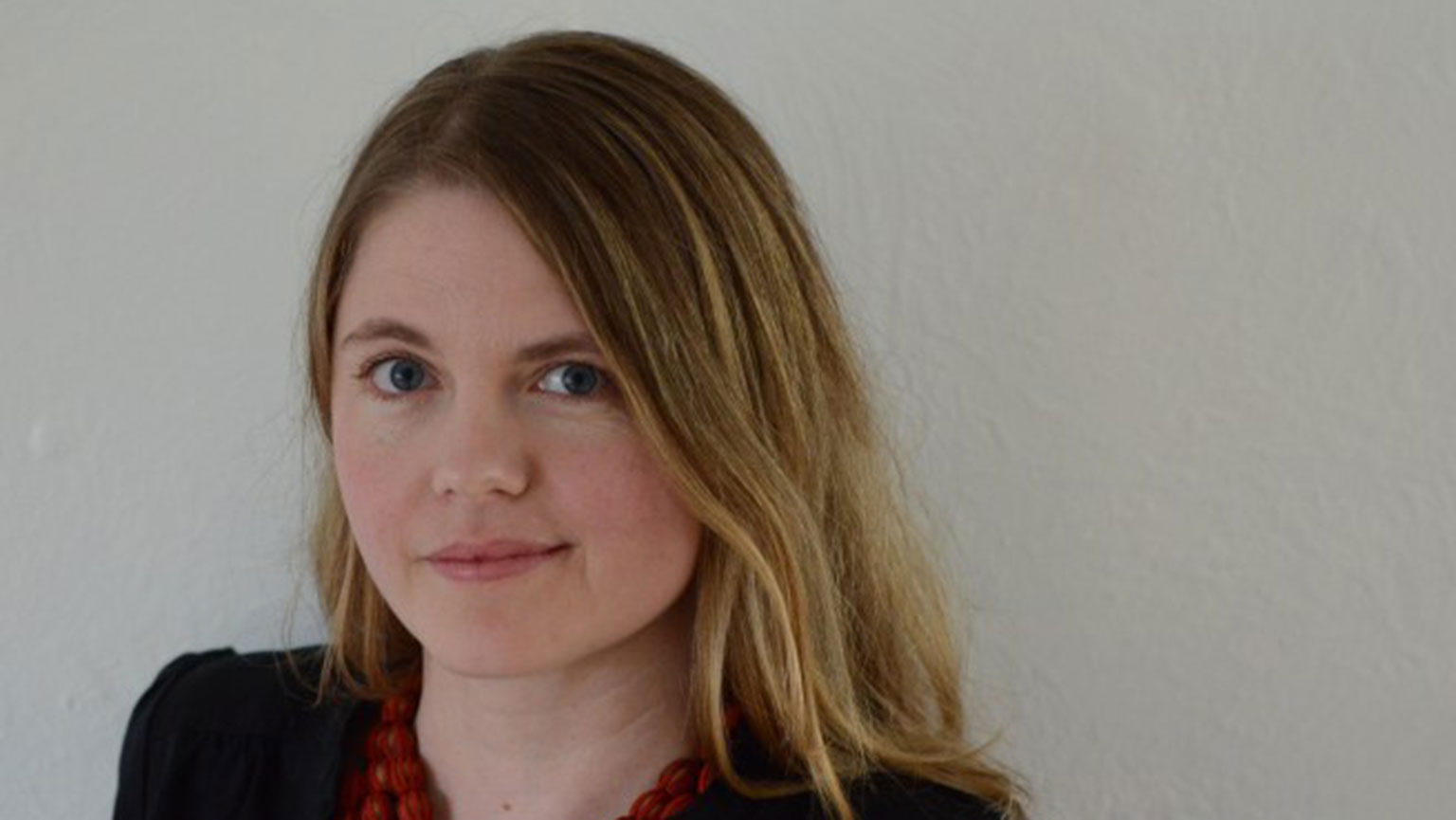
How do you forget a story?
First you unravel the plot. Implode the narrative into a jumble of fragments, splintered scenes, imperceptible objects, and unmapped locales. Then address the protagonist. Erase them physically, and then rub out their essence—obliterate their shadows and wipe their imprints clean. Next, remove the minor players, the bit parts, and the walk-ons. Send them into the woods, the water, or the mountains. Send them to a place where your mind can’t unexpectedly wander into their path.
The stains of our own stories are the hardest to scrub: the trace of the bad decision; the smear of shame. These memories worm their way through all the mind’s layers, and even when they lie dormant—whether for a short spell or a lifetime—this doesn’t solve the problem. Even if you can’t access these stories, they can always access you.
Sometimes you run into a story, and while you might not be acquainted with the characters, and the geography is unfamiliar and rendered unimaginable, the details smash into you with enough force to leave you whiplashed and bruised. I heard a story like this in February 2012 when Sadie was fourteen months old. Still reeling from the emotions of new motherhood, I tried to forget the details as soon as they hit me.
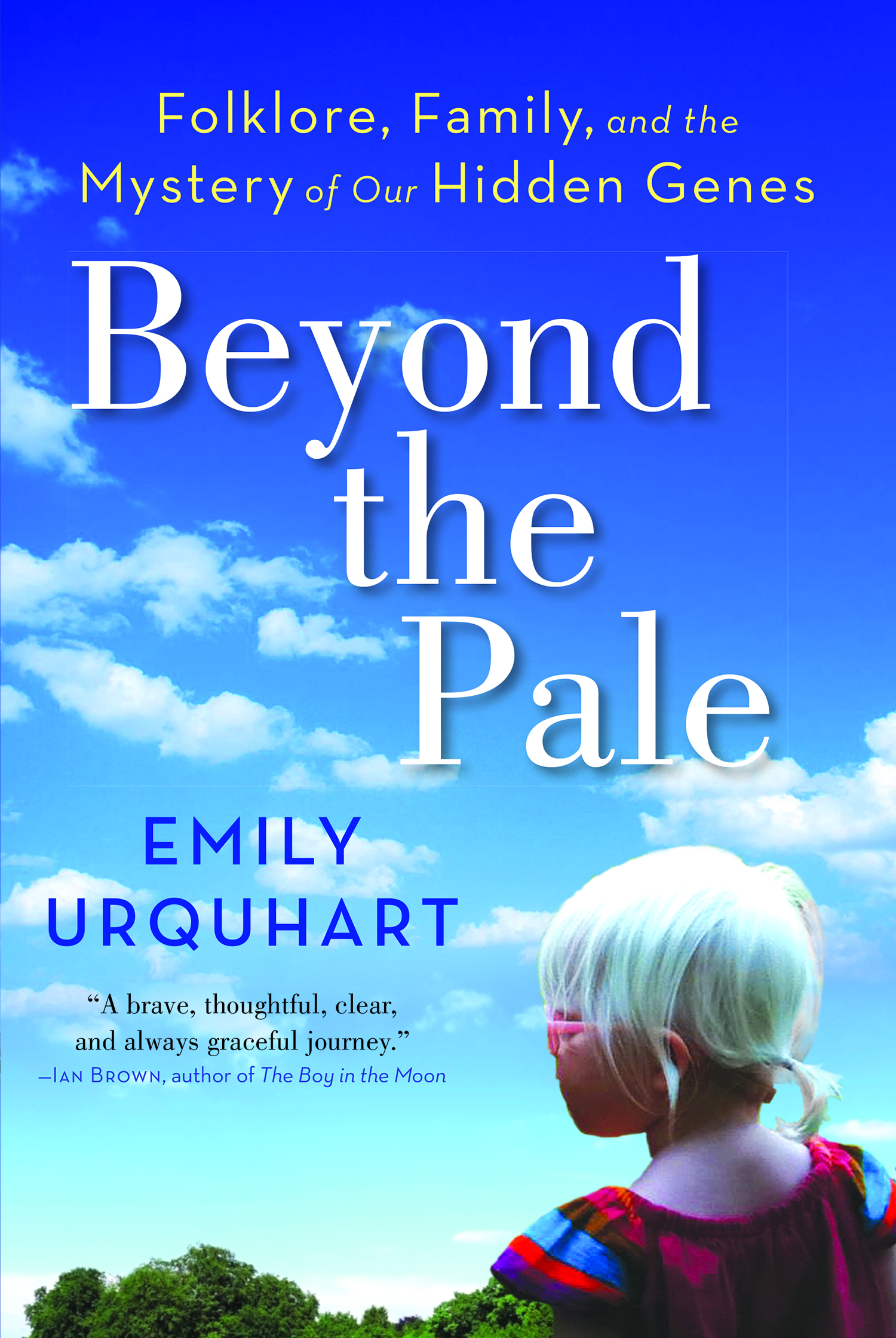 HarperCollins
HarperCollinsI had listened in a distant and removed way. I couldn’t imagine the setting the way I usually did when hearing stories or reading novels; the way houses and landscapes that I’ve known morphed slightly to become the backdrops for the characters to inhabit. The story I couldn’t forget is about a boy named Adam Robert Tangawizi. It takes place in rural Tanzania, a country I’ve never visited, a landscape that has no form or shape in my imagination. I’d been speaking with Peter Ash on the telephone, interviewing him for an article I was writing that included a section on witchcraft in Tanzania. He was in Vancouver, and I was listening from across the country in Newfoundland to his quick and certain succession of facts about the challenges and the violence against people with albinism living in East Africa.
I had been taking notes until he told me Adam’s story. Then I rested my pen because the details were extraordinarily tragic and I didn’t want to capture them in my notepad for fear that they might escape. I didn’t want to think about the story again, and I didn’t plan to retell it either. This is because it meant something to me, on a deep, almost unreachable level. There was a comparison between this boy’s life and my child’s life. Had my daughter been born in East Africa instead of Canada, she might have a similarly brutal survivor’s tale.
In the months that followed, I relented, sharing the narrative with a select audience, and writing an abridged version in the article I’d been working on. When I occasionally spoke of the atrocities in East Africa and was challenged by my listener, I countered with Adam’s story. It was a grisly swat at their skepticism. It was an effective weapon. Once I set the story free, I realized it had the ability to silence critics, to provoke thought, to incite fury and also agony. So I changed my mind. If this story wields power, if it might be the catalyst for change, then I’ll remember and retell it, and hope that it marks the beginning of the end.
It was late afternoon on October 14, 2011, when the stranger appeared. Adam was corralling his father’s cattle in the bush, watching over the cows as they grazed. He was a wiry tween, turning twelve the next day. The stranger, who’d sprung up suddenly in the tall grasses, called to him and waved him over toward where he stood a few paces away.
“I have a hat to give you,” the man said, holding out his offering for Adam to see.
Adam has low vision and can’t see very far. He was born with golden skin, and his eyes are a buttery hazel. His neck and forehead have grown wrinkled from exposure to the sun but despite this he appears younger than other boys his age. People call him an albino, or they call him a ghost, or “zero-zero,” meaning that he is nothing at all.
“I do not need a hat. I have one already,” Adam said to the man. “Bring your cattle over here,” the stranger said. “This is where the green grass grows.”
“No, this grass is fine,” Adam told him. “There’s no need for me to come there.”
Adam was rattled by the stranger. He had heard the stories about people with albinism being butchered and their body parts sold to witch doctors to use in powerful potions. This stranger could be a poacher, a witch doctor’s henchman. To people like him, Adam’s body is a sum of its parts. It is a gruesome arithmetic: a femur, a hand, a finger, each had a price.
The stranger might see Adam as a piece of meat to barter and trade. He might see Adam with X-ray eyes, boring through his pale skin to his precious bones, which miners might use to divine gold in the nearby hills.
Adam felt certain the man was going to hurt him and so he hurried home to where he lived with his father, stepmother, and siblings. His older brother, Salum, also has albinism. He was sixteen then and taller than Adam. On that day, he was visiting his grandmother in a nearby village.
When Adam arrived home, he was shocked to find the stranger from the bush sitting at the kitchen table and speaking with his father. “This man tried to attack me,” Adam whispered to his stepmother, but his fears were dismissed and the stranger was invited to stay for dinner.
“Make a fire in the cow-dung pit,” his stepmother urged, and Adam complied.
The stranger joined the family around the fire. The stepmother served stew. Adam ate nothing. A sudden rain interrupted the meal and the diners scattered toward the house.
Adam was at the threshold of the door when the weight hit, immobilizing him. He knew it was the stranger. The man held Adam still with his body and pinned his arm against the door frame, using the wood like an upright butcher’s block. With a thwack the stranger drove his machete into the flesh and bone of Adam’s left shoulder, but he got the angle wrong, slicing it lengthwise. He tried a second time, but again his blade slipped to the right, opening a vertical wound that ran half the length of Adam’s arm. The cut was deep but it didn’t amputate. Covered in blood, Adam slid to the ground. Now he was helpless, on his back. The man’s weight pressed him into the earth, and this time the shiny blade landed widthwise across Adam’s arm, just below his elbow. The man was trying to dismember him. In his final attempt, he brought his knife down across Adam’s palm. The bone cracked and the flesh gave. Two fingers and his thumb were wrenched forever from him. Adam screamed and called for his father, for anybody, to save him. No one came. In that sickening moment it became clear he must save himself. With the last of his strength, Adam pitched forward into the bulk of the man and bit the crotch of his pants. A weight was lifted. A flashlight shone, then disappeared. Bushes rustled and then there was silence. Where was his father? His stepmother? Lying in a pool of his own blood, Adam slipped into unconsciousness.
In the hours that followed, the police arrived and took Adam’s father and stepmother, along with two other relatives, into custody to question them about the attack. Not to question them as the traumatized guardians of a slaughtered minor, but as the perpetrators of the most heinous of crimes: filicide. According to one news report, Adam’s stepmother confessed to knowing about the crime, saying that the “original deal was ‘attack without killing.’” Whether this quote was fabricated or true, it doesn’t matter. Adam’s stepmother and father were released from jail because of insufficient evidence and will never stand trial.
After falling unconscious, Adam was delivered by ambulance from his rural home to the nearest hospital in the city of Geita. Once there, the doctors stopped the bleeding, disinfected his wounds, and dressed them, saving his life. Days or maybe weeks later, he was roused from his gurney and placed gingerly in a wheelchair, a nurse lifting his feet and tucking them neatly into the footrests. His lips were dry and cracked, his voice was soft. His irises darted back and forth under his drooped eyelids. His wounds were freshly bandaged: white gauze wrapped the gashes across his arms and wound carefully around the stumps of his missing digits. He was wheeled through an outdoor corridor where people sat in groups. Some turned to stare as he passed, others whispered, and yet others lowered their eyes. Then his chair was turned and parked in front of a reporters’ scrum. The journalists were poised with notebooks and pens, some had recorders, and there was a video camera pointed directly at Adam.
“Tell us about what happened to you,” they said. “Tell us your story.”
When Peter described Adam’s attack to me, I had trouble understanding the context.
“Capitalism and witchcraft are a dangerous combination,” he explained.
“Is money enough to motivate these gruesome murders? ” I asked. “Once you believe that someone is not human or equal to you, you’re able to do all kinds of things to them,” Peter said. “You believe they are a curse, or an evil spirit, and that you can get rid of this evil and make some money.”
Adam’s father and stepmother never considered Adam human, and saw the financial gain worth their son’s pain and possible death. It’s not a pardon or an excuse but a shaky explanation of what moved these people to commit an unforgivable crime.
On paper, the story shares key character roles and plot movements with some of the European folktales I studied in my graduate degrees. There was an evil stepmother, the attempted murder of a child, and the devil disguised as a traveling stranger. In particular, it reminded me of “Maiden without Hands,” a tale about a pious daughter whose father sells her to the devil in return for endless wealth. She dons a white dress, washes herself, and draws a circle of chalk around her body. Because of these measures, the devil finds that she’s impenetrable. He’s thwarted a second time when she’s purified by her own tears. “Cut off her hands so she can’t clean herself,” he instructs the father. Wary of losing his newly acquired wealth, the father complies. Her tears wash her bloodied stumps clean and the devil, reaching his quota of attempts on the third try, must retreat. The girl leaves home, she wanders through the woods in her white dress, she meets and marries a king, and she grows new hands, silver and shiny. Despite the devil’s malevolent interventions, she eventually lives happily ever after.
I’m drawing from the Grimms’ version, first published in the early nineteenth century, but this tale stretches back to at least the thirteenth century, with variants recorded in Russia; Eastern and Western Europe, including Great Britain and Ireland; Latin America; and French Canada. Scholars have heaped analysis on this tale, from feminist to psychoanalytical perspectives. The chopped hands might symbolize female repression, a punishment for masturbation, or, most perplexing, a castration.
In my own reading, the principal issue is betrayal. I can’t grasp why parents would mutilate their child to secure their finances. I imagine the pious girl extending her arms so that her father might chop off her hands, and when the blade comes down, she understands that her father’s love was limited, if it ever existed at all. Just as Adam must have known, in that moment when his father didn’t heed his call for help, that he was entirely alone. The maiden can never look back on her childhood, the times when she sat on her dad’s knee and he read her a story, or held her hand when they walked together, without the sound of the blade whistling in her ear and reminding her of how he’d betrayed her when she needed him most.
Under the Same Sun has shared Adam’s story with the media and through its own publications to help promote awareness. It knows the details will stick in the listener’s craw. It’s hard to turn away from a child so cruelly betrayed by his parents. Also, the story has a happy ending. The hero, Adam, survives and even gets a new hand, not silvery like the maiden’s but a refabricated version of the original. For this, he must journey halfway around the world to the Pacific Northwest, and this is where my path collides with the protagonist of the story I’d tried to forget.
I met Adam in December 2012, about a year after his attack . He had arrived in Vancouver a few months earlier. From his seat on the plane, he looked down with wonder at the expanse of the Atlantic Ocean. “Still Lake Victoria? ” he asked his travel companion, Dr. Patrick Bulugu, the Geita physician who first treated him. “No, that is the sea,” Dr. Bulugu told him.
During Adam’s rehabilitation earlier that year, Peter Ash had flown to Tanzania and visited him in the hospital. When he asked what he could do to help, Adam said, “I’d like to go to school.”
For this, he would need to write, have the ability to hold a pencil. The attack had left his dominant hand useless. Peter and his team came up with a solution. Adam would travel to Canada, where he could undergo surgery at Vancouver General Hospital—something that would happen on a quiet night, physicians, nurses, and other staff donating their time and skills to help rebuild his hand.
In the hospital’s operating room, the sight of the instruments sent him into a frenzy. Cold, shiny, and metallic, the tools instantly conjured the machete in his mind. He had traveled the curve of the globe, but he couldn’t shed the demons. In the nights after he arrived, he would wake suddenly, yelling into the darkness of the hotel room he shared with Dr. Bulugu. He took shelter in the closet, fearful that the stranger might return for him.
The physicians are friendly, careful, and kind. They remove a toe from Adam’s right foot and attach it to the bone of his mangled hand with wires, then fuse the muscles, tendons, nerves, and blood vessels. For two weeks Peter sits at his bedside in the hospital while Adam slowly heals.
He spends the next three months in physiotherapy, adapting to his new hand and learning English. There is no common language at the primary school he attends. He speaks Swahili. Most of the other kids speak Arabic or Urdu, but classes are conducted in English. He relearns to write by carefully balancing the pencil across his palm and curling his new thumb and remaining fingers around a thick wad of tape wrapped at its base.
By the time I meet Adam in early December, he’s able to write his name. I’d taken the early morning ferry to Vancouver to meet with Peter, and the Under the Same Sun’s director of operations, Don Sawatzky. I’d been considering a trip to Tanzania since attending the NOAH conference five months ago, but it was more an idea than a concrete plan. I’d had a few conversations with Don on the telephone but wanted to meet with both men to learn more about what is happening in sub-Saharan Africa and to ask their advice on who I might meet with and what regions I might visit, should I decide to put my tentative travel plans into action. Today I would have lunch with Peter and Don, and at the end of the school day, meet with Adam.
The office is in Surrey, a suburb of Vancouver. It’s an uninspiring setting on this low-ceilinged, drizzly day, wrapped in fog and populated with the usual chain restaurants and strip-mall stores of suburban North America, flanked by grim multistory high-rises. At the restaurant we sit in a dark wooden booth next to the window that overlooks a parking lot. Peter sits across from me, Don beside him, and Amadou Diallo, a third Under the Same Sun (UTSS) staff member, sits to my left. Amadou, who has albinism, was born in Guinea but spent most of his childhood and young adulthood in Côte D’Ivoire. After suffering a violent hate-fueled attack in his early twenties, he fled to Europe, where he lived precariously, hoping to be granted asylum. Now he works at UTSS as the advocacy officer for francophone Africa and is waiting for his refugee claim to be processed in Quebec.
“The potions that the witch doctors make out of the body parts of people with albinism cost thousands of dollars, so who do you think is buying this stuff? ” Peter asks me over lunch.
“I’m not sure who buys the potions,” I admit.
“Wealthy people,” Peter says. “Powerful people like politicians and businessmen. Which is why putting an end to the poaching will be so difficult, because the people who run the country are the same people who support the trade.”
I consider this for a moment. I had thought that the killings proliferated because people in power were afraid of the witch doctors. This is partly true. What I didn’t know was that they were full participants in this grim process of supply and demand. They are the consumers sitting at the top of the food chain.
Peter is a tall man and wears glasses with orange-tinted lenses. He’s an imposing presence and an astonishingly fast talker.
Don, who has salt-and-pepper hair and wears thick-rimmed dark glasses, had been his professor at college, and the two men, along with Peter’s wife, Debbie, had grown close. When Peter founded UTSS, he called Don and asked him to help tackle this human rights issue. Don didn’t hesitate.
UTSS has two main goals: advocacy and education. It supports students with albinism across Tanzania, with more than three hundred currently within their fold. It investigates and publishes reports on crimes against people with albinism throughout Africa, and uses awareness campaigns to demystify the genetic condition in Tanzania and other countries. The NGO has had a tremendous impact since its founding in 2008, and it is now the main source of information and support in regard to the witchcraft-related crimes. The organization’s second office is in Tanzania, and employees there have direct contact with the children they support, and are often some of the first officials on the scene following an attack. Both Peter and Don travel to East Africa several times a year. The work is taxing and emotionally draining, particularly when they deal with violence against minors. “It’s really painful,” Don concedes during one of our telephone conversations, “to see these little children who have been tormented so deeply.”
Many of the victims are young because they are vulnerable, easy targets. They can’t fight back. But there is another more gruesome reason: young flesh and bones are purportedly more powerful and thus more desirable and worth more money.
It’s getting dark when Adam arrives at the close of the school day. He scampers into the boardroom and takes a seat at the head of the table, to my left. I shake his new hand and it feels small and clenched in my grasp. Adam has thin yellow hair cut short to his scalp. He is wearing DKNY eyeglasses with a stylish purple stripe that runs along the temples. He is stretched and gangly, as pubescent boys tend to be, and he is fidgety and excited. He lets out a series of husky giggles when I ask him questions, which surprises me. I’d seen a local news segment about his reconstructive surgery and in it he was withdrawn and frightened, his voice barely audible and his eyes downcast. He’d looked smaller in those clips, wearing blue pajamas, limping, with his hand and foot bandaged. I’d expected a broken little boy but was met with a goofy kid. I hoped to hear Adam’s story firsthand, translated by Dr. Bulugu, and ask him the details that I’d imagined.
“How is your writing? ” I ask Adam. “Good,” he answers politely.
“Where’s your special pen? ” Peter asks him. “Why don’t you show Emily? Write your name.”
Adam concentrates on the task, gripping the pencil tightly, the thick band of tape scrolled an inch from the nib acting as a crutch for his newly reformed hand. Slowly, he scrawls his name across the sheet of paper. When he is finished he begins to draw, looking up occasionally to answer my questions.
“I want to ask you about when your hand was hurt, and your shoulder,” I say to him. “Do you remember your parents being there with you? ”
“Yes.” He nods.
“Did they help? ” I ask.
Adam rolls his eyes, and a throaty giggle escapes.
“No,” he says. Then he turns to Dr. Bulugu to qualify his answer in Swahili.
“He says that they helped him after the attack by raising the alarm, but not while he was being attacked,” Dr. Bulugu says.
“Did you know the man who attacked you? ” I ask Adam. “Name? ” he asks.
“Did you know him before? ”
“I know his face but not his name,” Adam says, then goes back to his drawing.
I don’t know if he means that he’d known the man from earlier that day, or earlier in his life, but I let it rest. I’d wanted to hear his story firsthand but suddenly the details don’t matter. What matters is that he survived and that he is here in front of me. He isn’t a label, a victim, an albino, he is just a kid. A kid who had a really terrible thing happen to him but who has made it out the other side. He has a hard time sitting still, he likes drawing and going to school, and he gives one-word answers to long-winded adult questions, like any kid would. “Adam, did you know that Emily has a child with albinism? ” Peter asks.
“I can’t believe I forgot to tell you that,” I say. I’d been so focused on Adam that I forgot to tell my own story, the main reason I’m here. “Here, I’ll find a picture to show you. They’re all of Sadie.” I scroll through the photo album on my iPhone. “Oh, look, here’s a video of her,” I say, and we both lean in to the screen to watch.
“See her white hair and her glasses? ” Don asks Adam, and he nods. Sadie is not quite two years old in the video, which is shot in our kitchen in Victoria. She is wearing a green dress and showing me, with some urgency, that the sun has come out. Halfway through the recording she pauses, then turns to the camera and says, sadly, “The sun’s all gone.”
Adam laughs. He shyly nudges his drawing my way and I ask if I can take it home. He nods. He’s drawn a baobab tree, native to Africa, inspired by a photograph on the boardroom wall, and a house with a series of people lying in their beds. I instantly read into the image—the people are on stretchers in a hospital—but Adam truncates my analysis by informing me that it’s a parking lot.
“Parking is a big deal in Canada, this is true,” I say. “Yes,” Adam says and giggles again.
In a few moments we are in the common room, where a small crowd has gathered to say goodbye to Adam and Dr. Bulugu. They fly back to Tanzania tomorrow, arriving in time for the Christmas holidays. Adam will join his older brother at boarding school in Dar es Salaam, where the pair will be safe and where they can earn their high school diplomas. Earlier I’d asked Adam if he wanted to go home and he nodded emphatically. I was surprised he didn’t want to stay here, but his longings were made clear by the way his eyes lit up when he whispered the name of his country.
A box of Timbits is passed around. It’s time for me to leave so I shake Adam’s hand and thank him for speaking with me. I tell him that I hope we can meet again. He smiles, but I’m not sure he understands or even hears me. It is distracting, the party, the friends, and he is the center of the celebration. It is his night.
On the homeward-bound ferry, a roving gang of boys races up and down the aisles, appearing at random intervals, plotting boyish plots, whispering conspiratorially among themselves, separating, reuniting, hiding, and then reappearing. “We aren’t allowed to go into any enclosed spaces on the ferry unless you really have to go to the bathroom,” one says to the other two, repeating the edict of some absent guardian. “You are allowed to go into the bathroom.”
They are probably approaching twelve or thirteen, the tipping point of childhood when these elaborate games of chase recede into memory. They are balancing between boyhood wildness and teenage aloofness. They would be Adam’s peers if he’d been born here. By tomorrow Adam will be on a plane heading back to Tanzania. I think of Amadou’s parting words from earlier today as I watch the boys make yet another lap down the aisle. “Your daughter is fortunate to be born in Canada.”
I imagine Sadie asleep in her crib as I speed toward her across the dark water. I think about how I will slip into her room when I get home and check on her, watch her for a few moments, listen to her slow sleepy breathing, as I’ve done every night since she was born. I can’t get home fast enough. At the same time, I’m planning my next voyage. This one will take me farther away, beyond the parameters of what I know and find comfortable. I’ve decided that today won’t be the last time I see Adam. I want to put his story into context. I need to understand how people live with this fear, and how they manage to overcome their challenges under the weight of constant threat. I want to know what I can do to help. I want to go to Tanzania, and I want to bring my daughter with me.


